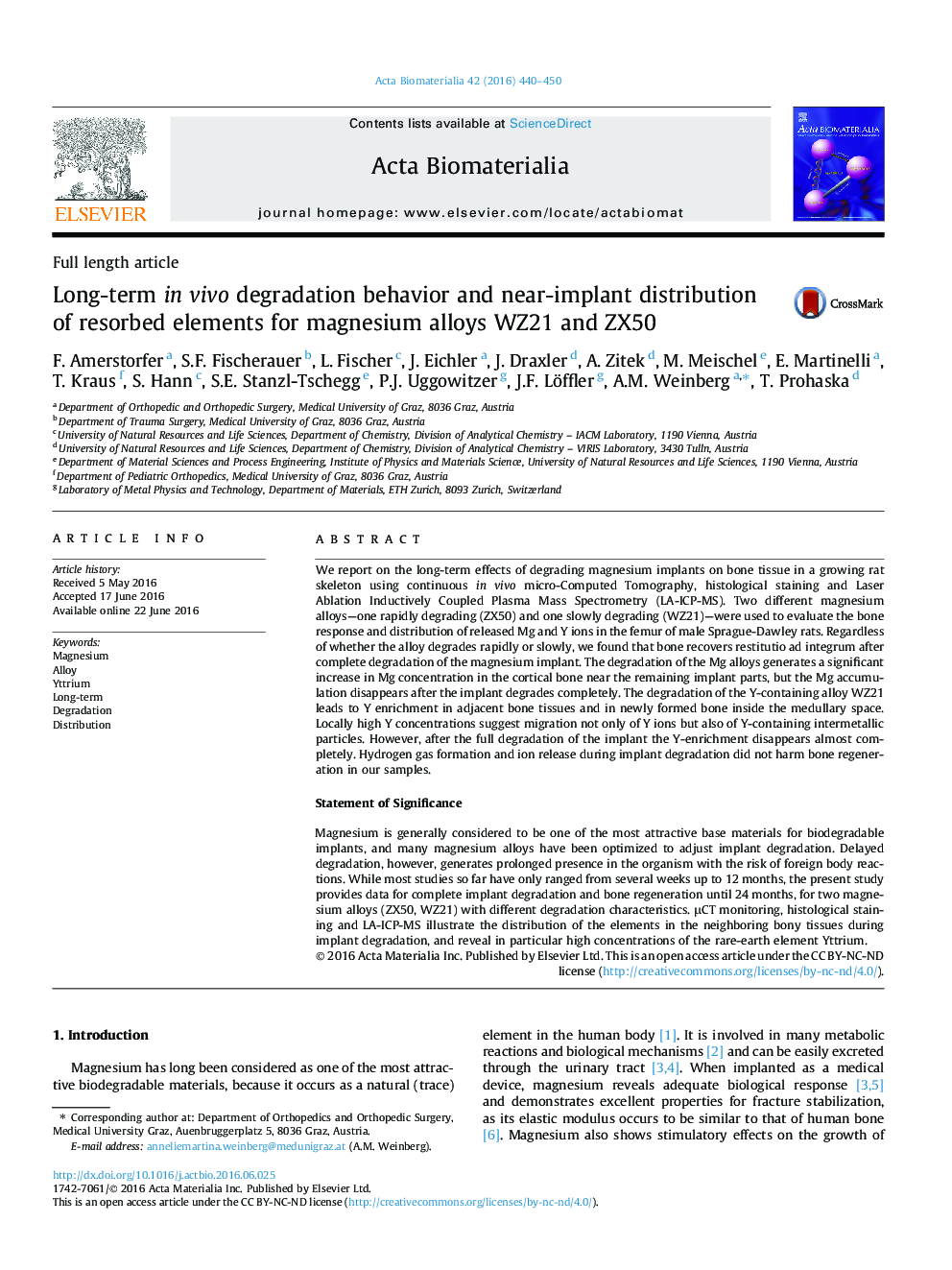| Article ID | Journal | Published Year | Pages | File Type |
|---|---|---|---|---|
| 6450274 | Acta Biomaterialia | 2016 | 11 Pages |
We report on the long-term effects of degrading magnesium implants on bone tissue in a growing rat skeleton using continuous in vivo micro-Computed Tomography, histological staining and Laser Ablation Inductively Coupled Plasma Mass Spectrometry (LA-ICP-MS). Two different magnesium alloys-one rapidly degrading (ZX50) and one slowly degrading (WZ21)-were used to evaluate the bone response and distribution of released Mg and Y ions in the femur of male Sprague-Dawley rats. Regardless of whether the alloy degrades rapidly or slowly, we found that bone recovers restitutio ad integrum after complete degradation of the magnesium implant. The degradation of the Mg alloys generates a significant increase in Mg concentration in the cortical bone near the remaining implant parts, but the Mg accumulation disappears after the implant degrades completely. The degradation of the Y-containing alloy WZ21 leads to Y enrichment in adjacent bone tissues and in newly formed bone inside the medullary space. Locally high Y concentrations suggest migration not only of Y ions but also of Y-containing intermetallic particles. However, after the full degradation of the implant the Y-enrichment disappears almost completely. Hydrogen gas formation and ion release during implant degradation did not harm bone regeneration in our samples.Statement of SignificanceMagnesium is generally considered to be one of the most attractive base materials for biodegradable implants, and many magnesium alloys have been optimized to adjust implant degradation. Delayed degradation, however, generates prolonged presence in the organism with the risk of foreign body reactions. While most studies so far have only ranged from several weeks up to 12 months, the present study provides data for complete implant degradation and bone regeneration until 24 months, for two magnesium alloys (ZX50, WZ21) with different degradation characteristics. μCT monitoring, histological staining and LA-ICP-MS illustrate the distribution of the elements in the neighboring bony tissues during implant degradation, and reveal in particular high concentrations of the rare-earth element Yttrium.
Graphical abstractDownload high-res image (359KB)Download full-size image
